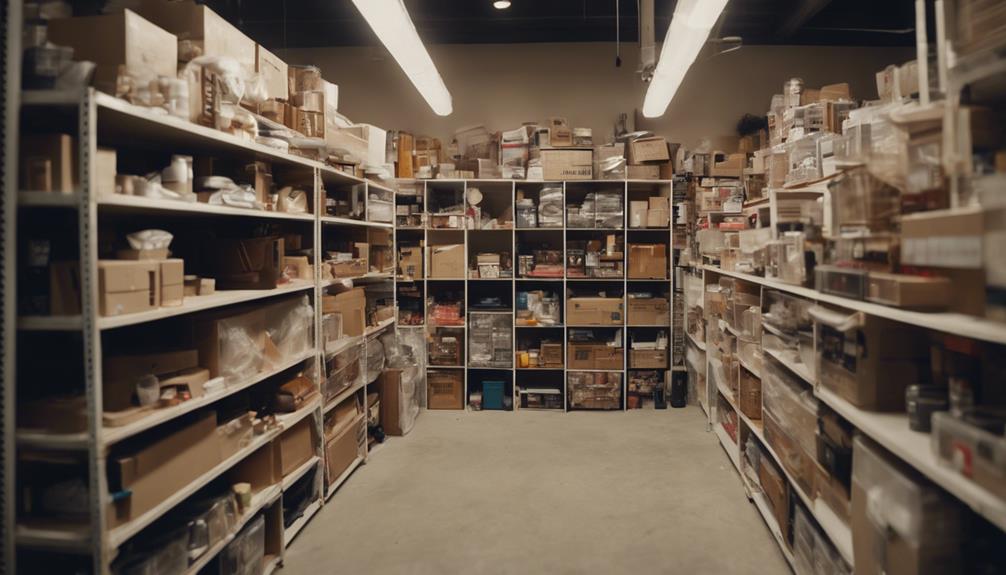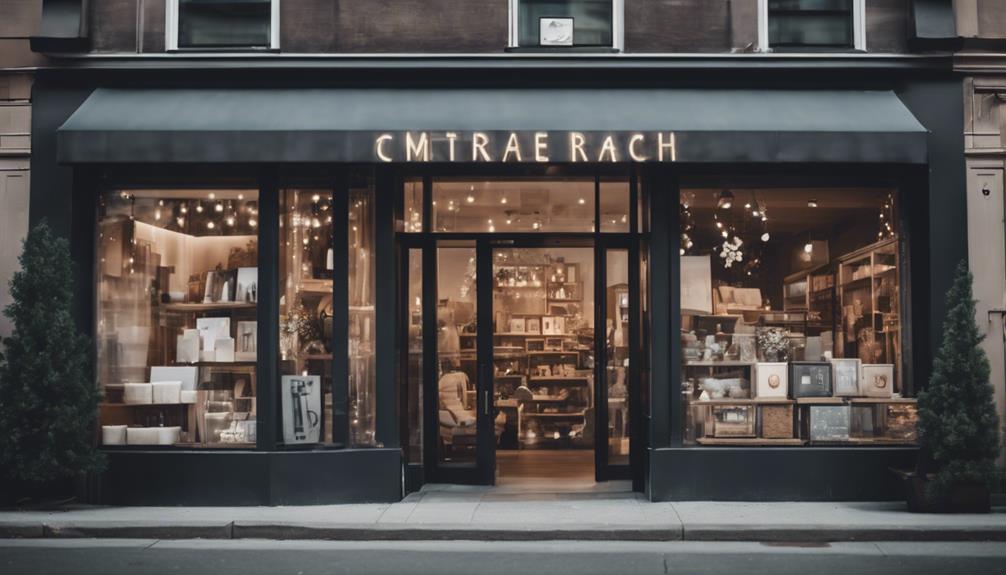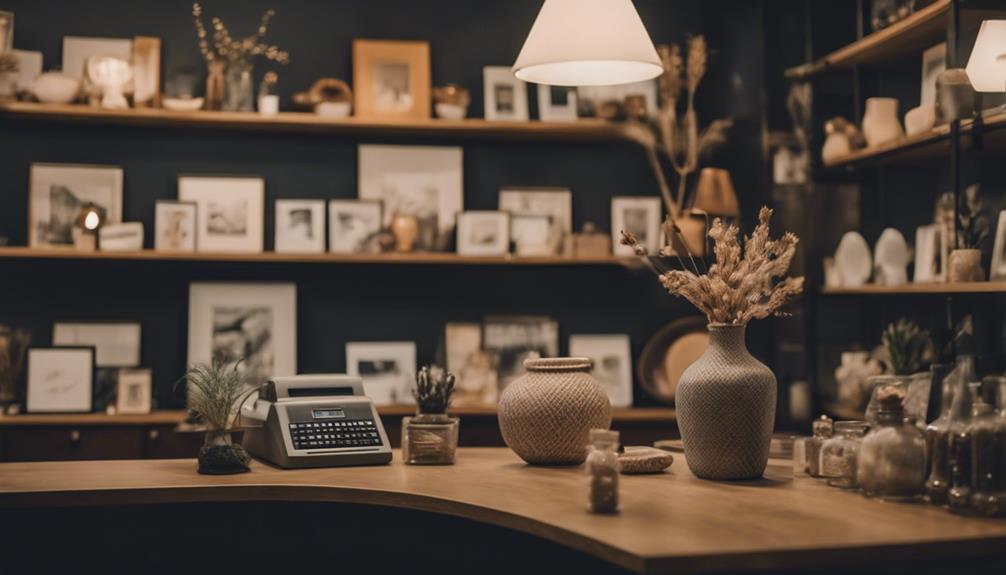Are you prepared to start your own home decor store? Create a solid business plan to ensure growth and profitability. Conduct comprehensive market research to grasp customer needs and industry trends. Differentiate yourself from competitors by showcasing unique selling points. Utilize wholesalers for bulk purchases to maximize inventory. Build customer loyalty through a strong brand identity and targeted marketing campaigns. Implement efficient inventory management strategies for well-stocked shelves. Improve customer experience for long-lasting connections. Stay informed on trends such as multi-purpose furniture and sustainable design options. Begin your path to retail success by adhering to these essential steps!
Key Takeaways
- Conduct market research to identify target customers and differentiate offerings.
- Develop a strong brand identity and utilize social media for visibility.
- Implement effective inventory management strategies for profitability.
- Focus on location, store design, and online presence for customer engagement.
- Offer trendy, diverse home decor products to cater to market demands.
Business Planning and Strategy
To successfully launch your own home decor store, begin by crafting a solid business plan that outlines your strategies for growth and profitability. Conduct thorough market research to understand customer needs and industry trends, which will inform your inventory management and marketing strategies.
When creating your financial plan, consider factors such as franchise fees, operating costs, and profit margins to guarantee a sustainable business model. Utilizing wholesalers for bulk purchases can help optimize your inventory management and increase profit margins.
Your business plan should detail how you intend to differentiate your home decor store from competitors, outlining your unique selling points and target market. By carefully considering all aspects of your operations, from sourcing products to pricing strategies, you can set yourself up for success in the competitive home decor market.
Market Research and Target Market

You need to pinpoint your target customers' demographics, behaviors, and preferences to tailor your home decor store offerings effectively.
By analyzing competitors in the market, you can define your niche and find ways to stand out from the competition.
Conduct thorough market research to understand the needs and trends of your target market, allowing you to capitalize on market segment opportunities.
Target Market Identification
Identify your target customers by analyzing demographics, conducting primary market research, and studying competitors in the home decor market. Consider factors such as age, income level, and lifestyle preferences to tailor your products and marketing strategies effectively.
By focusing on specific market segments like families, young professionals, or eco-conscious consumers, you can differentiate your offerings and carve out a niche in the competitive landscape.
Utilize primary market research methods such as surveys, interviews, and focus groups to gain insights into customer needs and preferences. Understanding your target market is essential for making informed decisions regarding product selection, pricing strategies, and personalized customer engagement.
Stay attuned to design trends and keep an eye on your competitors to remain relevant and appealing to your target audience. By honing in on your target market, you can enhance your store's success and build a loyal customer base.
Competitive Analysis Insights
By analyzing competitors' product offerings, pricing strategies, and target demographics, you can gain valuable insights into the market landscape. Understanding competitor strengths and weaknesses allows you to identify gaps in the market, enabling a unique positioning for your home decor store. Conducting a SWOT analysis helps assess your internal capabilities and external market conditions, giving you a strategic advantage.
Moreover, studying competitor marketing tactics, customer engagement strategies, and brand positioning provides valuable information for shaping your own marketing approach. Utilize market research data to pinpoint key competitors, market trends, and customer preferences. This data is essential for establishing a strong brand positioning and effectively engaging with your target market in the home decor industry.
Market Segment Opportunities
To capitalize on market segment opportunities in the home decor industry, leverage competitor analysis insights to define a niche market segment that aligns with customer needs and preferences. Start by identifying your target customers based on demographics like age, income level, and lifestyle preferences.
Conduct thorough market research to understand customer needs and preferences, exploring segments such as eco-conscious consumers or home entertainers. By tailoring your product offerings and marketing strategies to these specific market segments, you can effectively position your home decor store in the competitive landscape.
Consider the unique demands of eco-conscious consumers who prioritize sustainable and environmentally-friendly products, or cater to the needs of home entertainers seeking stylish and functional decor items. By honing in on a niche market segment and aligning your offerings with customer preferences, you can differentiate your store and attract a loyal customer base in the home decor industry.
Brand Identity and Marketing

Crafting a strong brand identity and implementing effective marketing strategies are key components in establishing a successful home decor store. Your brand identity is vital for brand recognition and fostering customer loyalty. By utilizing social media platforms, you can boost brand visibility and enhance customer engagement.
Implementing targeted email marketing campaigns will help you reach your desired audience and drive sales. Remember, a strong brand DNA with a memorable logo and consistent aesthetics is essential for brand recognition. Additionally, focusing on enhancing the customer experience through personalized interactions and engagement can lead to repeat business and valuable word-of-mouth referrals.
Make sure to tailor your marketing efforts to resonate with your specific target audience, creating a connection that goes beyond just selling products. By prioritizing brand identity and effective marketing strategies, you can set your home decor store up for success in a competitive market.
Operational Aspects and Inventory Management

When it comes to running your home decor store, effective inventory organization strategies are essential to maintain a well-stocked and appealing product selection.
Cost-effective stock management practices can help you optimize your resources and maximize profitability.
Inventory Organization Strategies
Effective inventory organization is vital for the smooth operation of your home decor store, guaranteeing ideal stock levels and efficient product turnover. Implementing an inventory management system and utilizing software solutions such as POS systems can help you track stock levels, set reorder points, and monitor product turnover rates accurately.
Categorizing products based on type, size, seasonality, and popularity will optimize shelf space and enhance the shopping experience for your customers. Conducting regular inventory audits is necessary to identify slow-moving items, eliminate excess stock, and capitalize on high-demand products effectively.
Training your staff on proper inventory handling procedures, including receiving shipments, labeling products, and performing regular stock checks, will secure accuracy and efficiency in managing your inventory. By following these strategies, you can maintain adequate stock levels, improve product turnover rates, and enhance overall operational efficiency in your home decor store.
Cost-Effective Stock Management
Implementing efficient stock management practices is essential for maximizing profitability and maintaining a well-organized home decor store. By employing inventory control methods and utilizing wholesalers for bulk purchases, you can achieve significant cost savings and enhance your inventory management. Regularly analyzing sales and inventory trends will provide valuable insights for making informed restocking decisions, ensuring that your store remains profitable. Effective stock management is crucial not only for financial reasons but also for creating a seamless shopping experience for your customers.
| Cost-Effective Stock Management | Benefits |
|---|---|
| Inventory control methods | Prevent overstocking/understocking |
| Wholesalers for bulk purchases | Cost savings, better inventory management |
| Analyzing sales and inventory trends | Informed restocking decisions |
| Maintaining profitability | Well-organized store |
| Efficient stock management | Maximizing profitability |
Resources and Support for Retail Success

To achieve success in your home decor retail venture, tap into resources and support networks tailored to guide you through the process. Access expert advice, guidance, and essential strategies for starting and running a successful retail business within the home decor industry.
Explore opportunities for collaboration, partnerships, and legal considerations that can support your retail success. Maneuvering challenges in opening a home decor store can be eased with expert support and insights into the nuances of the industry. Researching potential partners such as local artisan suppliers or established furniture manufacturers can provide unique and high-quality products for your store, while also building valuable relationships. Additionally, understanding the legal considerations such as zoning laws, permits, and contracts can help prevent costly mistakes and ensure a smooth launch for your business. For more home decor business tips, consider attending industry trade shows and networking events to connect with experienced professionals and gain valuable insights.
Utilize available resources for retail success, including information on franchise fees, operating costs, and market positioning. By leveraging these resources and support systems, you can make informed decisions, establish strong partnerships, and address any legal considerations that may arise.
Location, Store Design, Online Presence

Strategically choosing a location for your home decor store is a vital decision that can greatly impact your business's success. When considering your location, keep in mind average rental costs ranging from $2,500 to $8,000 per month and buying costs from $80,000 to $500,000.
Your store design should prioritize distinct product display zones, interactive elements, and customer comfort to enhance the shopping experience. Additionally, having a strong online presence is important. Make sure you have user-friendly websites, e-commerce capabilities, and engage in social media marketing to drive customer engagement.
To attract and retain customers, consider offering virtual tours on your website. Quality display and storage solutions like shelving units and lighting fixtures are essential for showcasing your products effectively. For a unique touch, explore custom-made display solutions that can provide a memorable shopping experience for your customers.
Product Selection, Pricing, Operations

Consider curating a diverse range of home decor products to cater to various tastes and preferences in your store. When selecting products, focus on competitive pricing strategies that align with market trends, product costs, and profit margins to guarantee profitability.
Streamline operations through efficient inventory management, structured staff training, and organized checkout procedures to enhance overall efficiency. Monitor sales trends closely to adjust inventory levels accordingly, preventing excess stock or shortages.
Emphasize cleanliness, organization, and exceptional customer service to improve the shopping experience and encourage repeat business. By offering a wide selection of products at competitive prices, maintaining efficient operations, and prioritizing customer satisfaction, you can position your home decor store for success in the market.
Marketing, Promotion, Customer Experience

How can you effectively enhance your home decor store's presence and engage with your target audience?
To succeed in the competitive retail market, it's essential to focus on marketing, promotion, and customer experience. Here are some key strategies to contemplate:
- Implement targeted marketing strategies to customize your messages and promotions to specific audience demographics, increasing the chances of converting leads into loyal customers.
- Create engaging promotional campaigns like opening discounts and loyalty programs to attract new customers and retain existing ones, fostering lasting relationships and repeat business.
- Enhance customer experience by offering personalized assistance, flexible payment options, and actively seeking and utilizing feedback for continuous improvement.
Trend Analysis, Product Offerings

The current trend analysis in home decor highlights various innovative product offerings that cater to different customer preferences and lifestyle needs. Multi-functional furniture, such as convertible sofas and extendable tables, is trending for its adaptability in small spaces.
Embracing global influences, home decor products now integrate design elements from diverse cultures to provide customers with an international flair. Additionally, the rise of technology-resistant spaces caters to those seeking digital detox areas and tech-free zones, offering meditation products to support a balanced lifestyle.
Indoor plants and greenery are in high demand, providing a variety of plant options, care accessories, and nature-inspired products to bring a touch of green into living spaces. On the other hand, declining trends are evident in the shift towards eco-friendly materials, craftsmanship emphasis, digital minimalism, and decreased interest in generic home goods.
Embracing these trends in your home decor store can attract a wide range of customers seeking modern and sustainable design options.
Frequently Asked Questions
How to Start a Home Decor Store?
To start a home decor store, determine your target market, unique selling proposition, and conduct market research. Develop a solid business plan, secure a strategic location, focus on brand identity, product selection, and customer experience.
Are Home Decor Stores Profitable?
Home decor stores can be profitable, with an average profit margin of 30% to 50%. Factors like location, inventory selection, pricing strategy, and customer service influence profitability. Offering unique products, competitive pricing, and effective marketing are key.
How Much Does It Cost to Open a Home Store?
Opening a home store can cost anywhere from $50,000 to $250,000 for the shop, with initial inventory budgets ranging from $15,000 to $40,000. Additional expenses include rent, licenses, permits, and marketing activities.
Can You Make Money Selling Home Decor?
You can definitely make money selling home decor! The industry is lucrative, with high profit margins and growing online sales. By capitalizing on trends and holidays, a small home decor business can generate substantial revenue.
Conclusion
Now that you have all the tools and knowledge to open your own home decor store, it's time to take the leap and make your dream a reality.
Did you know that the home decor industry is expected to reach $664 billion by 2026? With the right planning and execution, you can carve out your own piece of this lucrative market.
So go ahead, start your journey towards retail success today!









